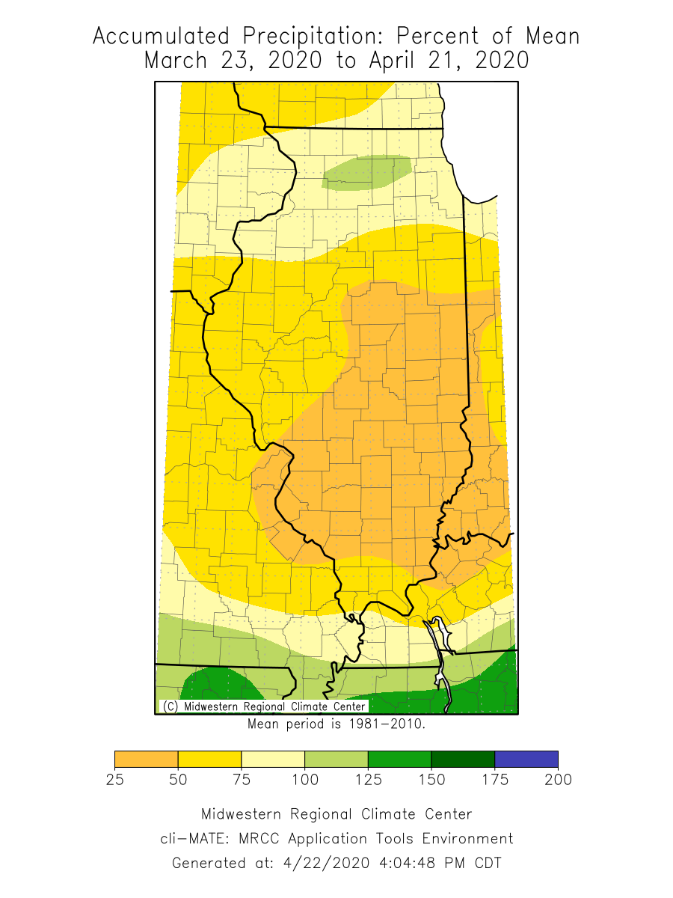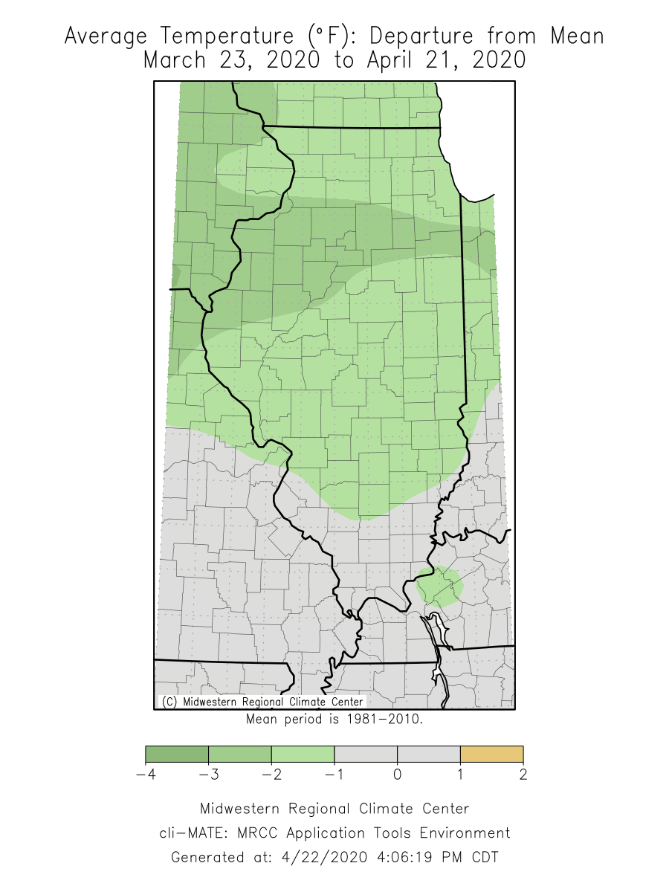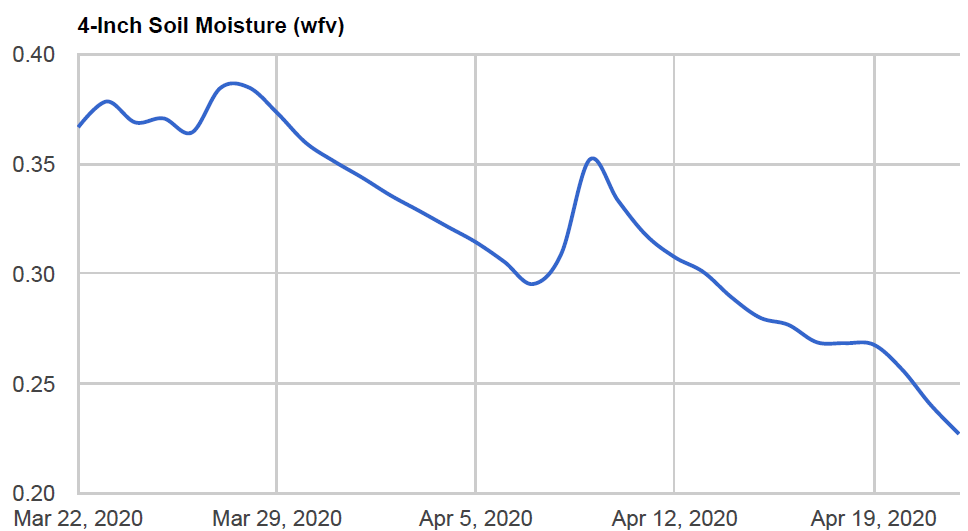The year 2020 started out very wet and warm throughout most of Illinois. Statewide precipitation averaged 10.30 inches through the end of March, 3.21 inches above the long-term (1981–2010) average and the tenth highest for the January–March period on record (back to 1895). This amount is also roughly comparable with that received in 2019 (10.58 inches) and 2018 (10.09 inches) for the same period. The central and southern parts of Illinois were particularly wet, with many areas receiving over 150% of their January–March average. The wet conditions also contributed to high soil moisture and streamflows throughout most of the state early in the year.
Temperatures were also quite warm, averaging 36.2 degrees statewide in the first three months of 2020, 3.3 degrees above the long-term average and the eleventh warmest on record for this period. This contrasts with 2019 and 2018, which were both colder than average for the same period in Illinois, but is about the same as in 2016.
Starting in the later part of March a noticeable shift to drier and cooler conditions began throughout most of Illinois. For the 30-day period ending April 21, many areas of east central and southern Illinois received less than 2 inches of rain, or between 25 and 50% of their average precipitation for that period. Northern Illinois was closer to but still slightly below average.
Temperatures were also 1 to 2 degrees below average across most of the state, with most of Illinois dropping into the 20s for one or more nights the week of April 13. These conditions were slightly cooler than for the same period in 2019 but still much warmer than in April 2018, which was the second coldest on record for Illinois. This year also differs from 2019 in that the wet conditions over the winter did not last into April. In April 2019, Illinois received 0.80 inches above average precipitation statewide.
Illinois percent of average precipitation (left) and temperature departure from average (right) for the 30-day period ending April 21. Source: cli-MATE, Midwestern Regional Climate Center. https://mrcc.illinois.edu/CLIMATE.
These drier conditions have helped to reduce the high soil moisture, especially in the eastern and southern parts of the state. For an example of a typical case, the first line plot below shows 4-inch soil moisture at the Illinois Climate Network (ICN) Champaign station for a period ending April 22, 2020, in units of water fraction by volume. A decline in soil moisture as April has progressed is apparent from the plot, approaching 0.20 by the end of the period. This is compared with the same period for 2019 below that, which shows the much wetter soil conditions at this time in 2019 that severely delayed—and in some cases prevented—planting.
Soil moisture levels in terms of water fraction by volume at the ICN Champaign station for the period March 22 to April 22, 2020 (top) and 2019 (bottom). Source: Water and Atmospheric Resources Monitoring Program (WARM). Illinois Climate Network. https://www.isws.illinois.edu/warm
Dry conditions have also helped to lower streamflows across the state. The United States Geological Survey (USGS) reported on April 21 most of the 7-day average streamflows in the eastern and southern parts of the state to be in the bottom 25% of the values typical for those streams this time of year, with a few in southeast Illinois in the bottom 10%. Stations in the western part of the state were closer to normal. This strongly contrasts with conditions at the same time last year when many stations in Illinois reported streamflows well above normal, with some even in the top 10% or higher.
Looking ahead, the Climate Prediction Center’s April 16 outlook for May is forecasting equal chances of above, near or below normal temperatures throughout Illinois and a slight chance of above normal precipitation for all but the northernmost part of the state. The forecast for the summer (June–August) is similar: equal chances of above, near or below normal temperatures and a slight chance of above normal precipitation for all of Illinois.
For more details, the Illinois State Water Survey is a great source for climate and soil moisture conditions for Illinois. Resources include the Illinois State Climatologist Office, the Water and Atmospheric Resources Monitoring Program (WARM), and the Midwestern Regional Climate Center. The Illinois Water and Climate Summary, currently available through the WARM web page, also provides in-depth details on a monthly basis.
The following resources were also used for this report:







